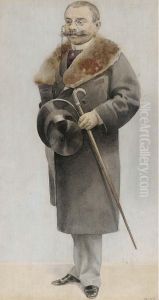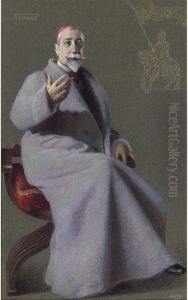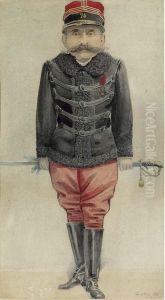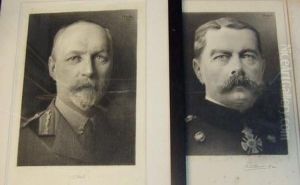Jean-Baptiste Guth Paintings
Jean-Baptiste Guth was a French portrait artist known for his distinctive style and contributions to late 19th and early 20th century European art. Born in 1855, Guth's artistic journey began in an era rich with cultural and artistic movements, providing a vibrant backdrop for his development as an artist. Throughout his career, Guth demonstrated a keen ability to capture the essence of his subjects, primarily focusing on portraits that highlighted the personality and status of the individuals he depicted. His work gained recognition for its detail, composition, and the emotional depth he was able to convey through his brushwork.
Guth's artistic talents were nurtured in Paris, a city that was, at the time, the heart of the art world. Paris provided him with the opportunity to study under prominent artists and at prestigious institutions, which helped refine his technique and artistic vision. Although specific details of his education are less documented, it is known that he was active and well-connected in the Parisian art scene, participating in exhibitions and gaining the patronage of notable figures of the time.
During his career, Jean-Baptiste Guth also became known for his illustrations and contributions to periodicals and publications, which was a common practice among artists seeking to broaden their audience and income sources. His illustrations often featured prominent personalities of the day, showcasing his skill in capturing likenesses with a few strokes of his pen or brush. This work helped to cement his reputation beyond the confines of traditional art circles, making his work accessible to a wider public.
Guth's portraits were not limited to canvas; he was also adept in using watercolors and drawing, mediums that allowed him to work with speed and flexibility, capturing fleeting expressions and moments with great skill. His ability to work across mediums demonstrated his versatility as an artist and his dedication to capturing the human condition in whatever form it took.
Jean-Baptiste Guth's legacy is that of a skilled portraitist who was able to document an era through the faces of its people, from the elite and influential to the characters that filled the bustling streets of Paris. His death in 1922 marked the end of a career that had spanned some of the most dynamic periods in French art, leaving behind a body of work that continues to be studied and admired for its contribution to the art of portraiture. Guth's art captures a fascinating snapshot of his time, providing insight into the personalities and cultural milieu of late 19th and early 20th century France.



